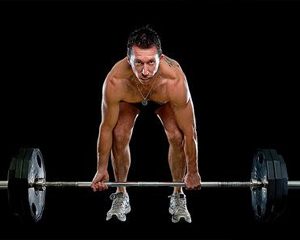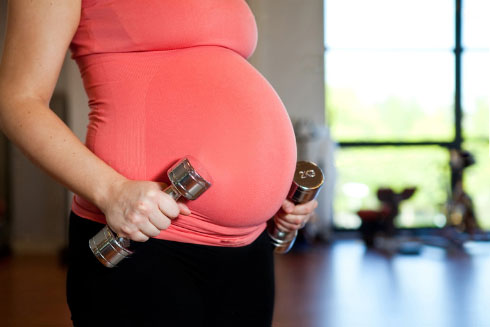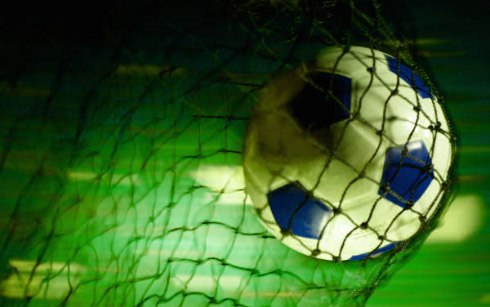DEADLIFT
 Deadlift – one of the most important basic exercises in bodybuilding and powerlifting
Deadlift – one of the most important basic exercises in bodybuilding and powerlifting
Benefit
The deadlift is a complex, multi-articular exercise, in which more muscles take part than in any other strength exercise, which perfectly develops the strength and muscles of the whole body.
It is the deadlift, along with squats, referred to as accelerating metabolism exercises, thereby improving the ability of muscles to grow.
Technique of deadlift
As in the case of squats, the correct technique for running deadlifts is extremely important. Otherwise, injuries will not pass you. For example, with a rounded back, the load on the vertebral discs becomes excessive and can cause at least their displacement or pinch the vertebral nerve.
Beginners in the performance of deadlifts often have a problem of insufficient flexibility, which leads to improper execution techniques. In this case, you need to take the time to stretch the Achilles tendons, biceps and hip muscles, as well as the buttocks, and only then begin to complete this exercise.
Another problem can be considered a weak lower back. In this case, working with large weights is very unsafe. Therefore, for absolute beginners in strength training, first performing other exercises, it is necessary to strengthen this and other muscle groups and only then proceed to perform deadlifts.
Technique of the exercise:
1. In the initial position, the feet are turned out and are completely on the floor, the hips are near the fingerboard.
2. Bend your knees, bend forward and grasp the fingerboard with a straight arm, grip shoulder width or slightly wider. The back is arched in the back, the chest and shoulders are straightened, the head is looking forward, and the neck touches the legs.
3. Start lifting the barbell. The movement begins with the extension of the knees, and only then, when practically rise from the squat, read the extension in the hip joint. When lifting, keep your back extremely straight, and the neck – as close as possible to the legs.
4. At the top of the lift, the hip and knee joints should be fully extended. But do not reject the body back, it is fraught with unpleasant consequences for the waist.
5. Lowering the boom. Bending your knees and at the same time taking the pelvis back, gently tilt the body and lower the barbell. In motion, be sure to hold a slight deflection in the lower back. At the lowest point, tighten the muscles of the back of the thigh and pull the barbell upwards, rising from the squat.
It is important to know:
When lifting and lowering the boom, always hold your breath. This will help you keep your back straight, as holding your breath increases muscle strength, but also increases pressure. Therefore, breathing is not to be abused – just breathe out as soon as you get over the most difficult part of the climb.
When working with large weights, use insurance – wear a weightlifting belt. It is good when it is wide not only from behind, but also in front.
Each repetition should be complete: having touched the floor bar, you cannot immediately lift it, or follow the approach without touching the floor at the lower point of the movement with pancakes. At the end of the approach, do not throw the bar on the floor.
The most convenient and therefore popular grip of the so-called “misunderstanding” is potentially traumatic, as it causes a torque, which gives an additional load on the spine.
Hands when performing deadlift is only a link between the points of application of force.
Embodiments of
There are several types of exercises:
Deadlift in sumo style. Performed with legs wide apart, the main burden falls on the muscles of the hips. This performance technique is optimal with a weak back and / or long arms.
Deadlift on straight legs. The main difference is that when bending over the bar, the knees are practically not bent. This technique is considered much more traumatic.
Stalled traction with partial amplitude. When performing this technique, the back is intentionally kept rounded, and the neck is pulled only to the middle of the thighs, so there is no opportunity to rest between repetitions.
Working muscles when performing deadlift
The following muscle groups receive the greatest load:
straightening muscles
gluteus muscles
quadriceps
biceps hips
the latissimus dorsi
upper back muscles
forearm
It is interesting
457.5 kg – an absolute world record in the implementation of the deadlift, was set April 5, 2009 by Andy Bolton (UK).



